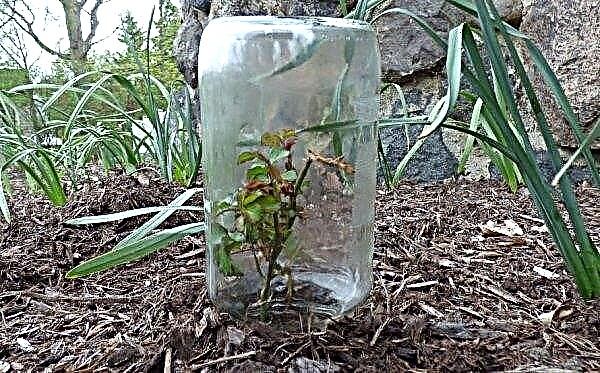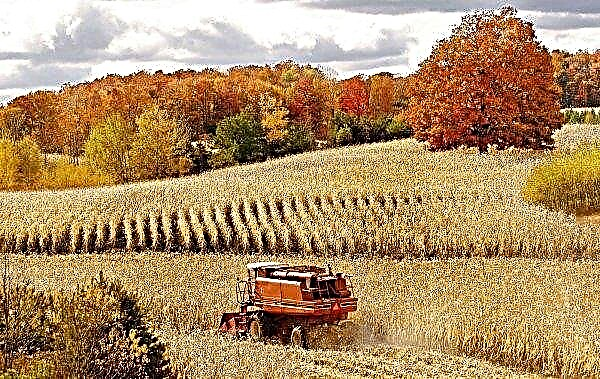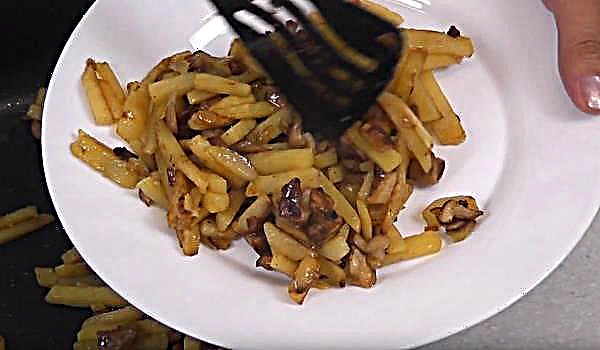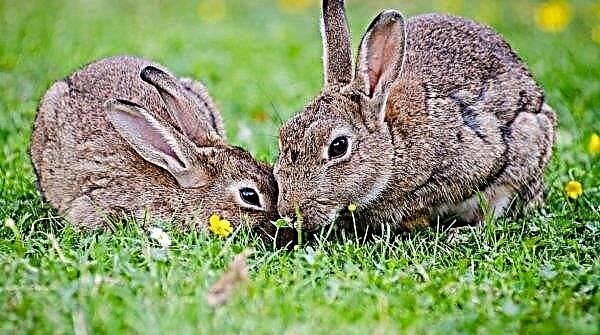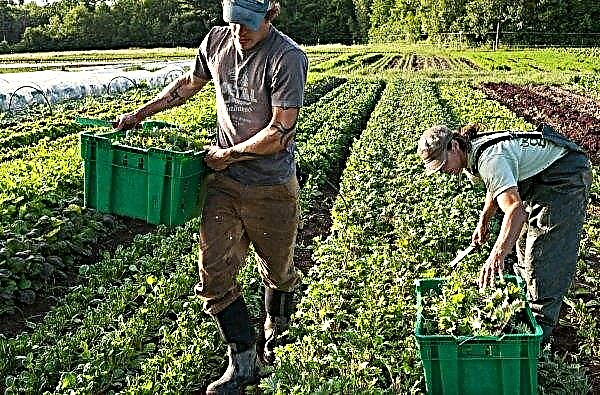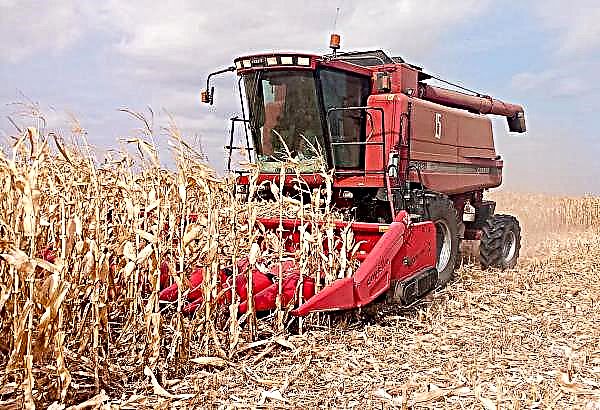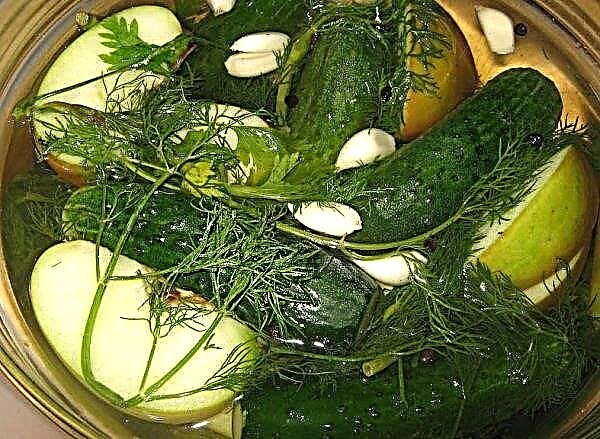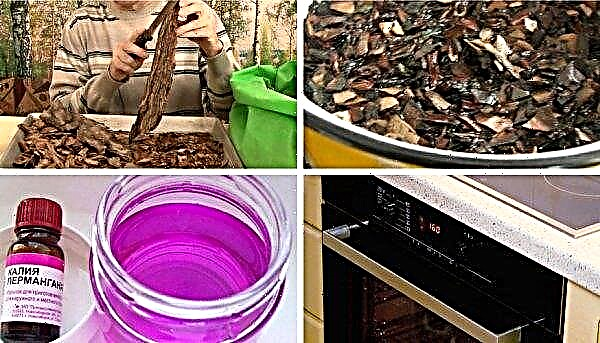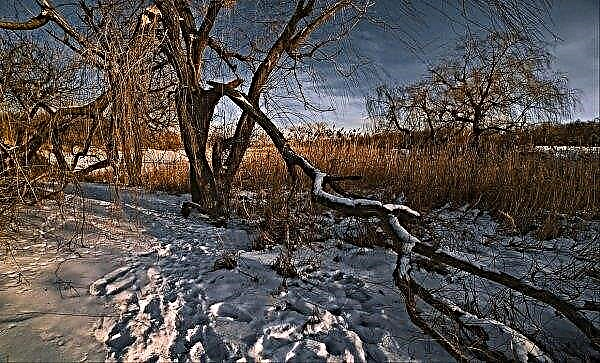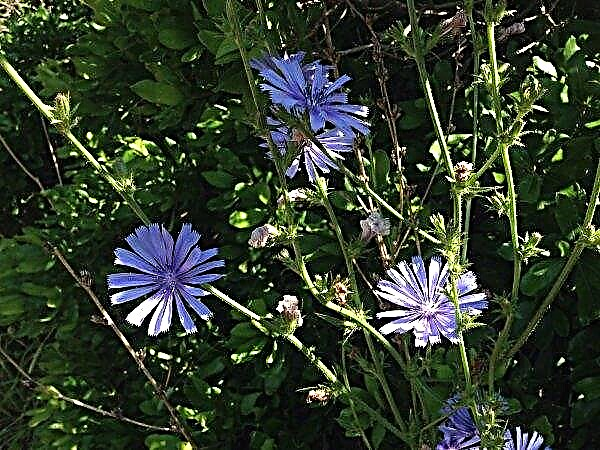Blackcurrant is a storehouse of healthy vitamins and minerals. In this article you will learn about the features of the Sorceress blackcurrant variety, about its advantages and disadvantages, as well as about its care.
Description of Black Currant Sorceress
This type of currant is quite prolific. From one bush per season, you can collect up to 5 kg of berries. The variety is very popular among gardeners. The plant does not tolerate drought, therefore, requires quality care. It has high palatability, it is attributed to dessert blackcurrant varieties.

Selection history
The variety was first bred in Belarus at the Institute for Fruit Growing in the agro-town Samokhvalovichi of the Minsk region. It is entered in the register as a variety for home cultivation in 2005, but now it is starting to gain wider popularity due to the preservation of a high percentage of quality when transporting berries over long distances.
Did you know? Blackcurrant contains 5 times more vitamin C than redcurrant.
Appearance, characteristics of berries, ripening time, yield
Blackcurrant berries have a large amount of carotene, vitamins A, C, B, P, as well as pectin, sugar, phosphoric acid and essential oil.
Description of berries:
- round;
- black color;
- the pulp is dense;
- have a sweet and sour taste;
- average weight reaches 1.6 g.

In terms of ripening, this variety is mid-season. Productivity is high - from 1 ha of land you can collect up to 11 tons of fruits of black currant Sorceress. The bush is of medium height, the branches are strong. The leaf is large, sinewy, green.
Did you know? Essential oil prepared with blackcurrant berries has an antimicrobial effect.
Advantages and disadvantages of the variety
- Advantages of the Sorceress variety:
- winter hardy grade;
- high productivity;
- dense berries, amenable to transportation;
- after collection, the berry remains dry, does not flow;
- rarely affected by powdery mildew.
- Disadvantages:
- often affected by leaf spotting.
Did you know? Essential oil prepared with blackcurrant berries has an antimicrobial effect.
Agricultural technology
A prerequisite for the care of black currants of the Sorceress variety is the irrigation of the land under the plant after watering. Shrubs will also be good to tie up, because they bend under the weight of the fruit, the branches can be broken because of this, and the fruit will be close to the ground. Garter bushes will facilitate harvesting and the plant will not succumb to the formation of excess moisture. Frequent irrigation will help fight weeds.
Video: Currant Sorceress
Seat selection and landing
The place is chosen well-lit, without a shadow. Planting should not be very dense, between the bushes the distance is 1 m, and between rows up to 2 m.This arrangement of shrubs will make it easy to water the plant, harvest, and also currants will not succumb to the formation of fungal diseases.
Important! You can not plant black currants close to wetlands. Excess moisture will affect the formation of the fungus in the plant.
Care
Watering should be once a week, 10 l of water should be applied to 1 bush. With severe drought, it is recommended to make water 3 times a week, also 10 liters. In autumn, top dressing should be applied to the soil: 100 g of superphosphate and 20 g of potassium chloride under one bush. In the spring, it will not be amiss to add 50 g of nitrogen fertilizers to each bush. After that, it is also recommended to mulch from manure and peat. Such a mixture will slow down the growth and appearance of weeds and the work of caring for currants will become easier.

Pest and Disease Control
So that the plant does not succumb to diseases and pests, agricultural measures should be taken, but if you still could not protect the bush, you should respond to it as soon as possible.
Important! If the disease progresses rapidly, then the most affected shrubs will be better completely remove from the soil, and try to cure the rest.
Blackcurrant Disease:
Pests of blackcurrant:
Trimming and shaping a bush
Each year in mid-November or early March, pruning should be done. When cutting, all dry branches and those that are infected with diseases and pests are removed. New branches are removed by 20%, and biennials and older - by 15%. Such measures will help maintain the bush in good condition, it will not be too thick. The shrub will be able to get enough sun and will be less susceptible to infection with fungal diseases.
 Fig. 1. Currant pruning: a - annual seedling; b - a biennial bush; c, d - shortening of shoots. Fig. 2. Currant bush before anti-aging pruning (a), after it (b) and pruning of a neglected bush (c).
Fig. 1. Currant pruning: a - annual seedling; b - a biennial bush; c, d - shortening of shoots. Fig. 2. Currant bush before anti-aging pruning (a), after it (b) and pruning of a neglected bush (c).
Wintering
The Sorceress variety can withstand low temperatures and does not die with them, so wrapping shrubs is not necessary.
Harvesting and transportation of the crop, shelf life of berries
Thanks to the dense pulp, the berries are transportable, after collection they should be stored in a cool, dry room. Berries can lie a week after harvest, the main thing is not to wet them and so that they are not in the sun. Berries are harvested only on a dry day, it is not recommended to pick them after rain.
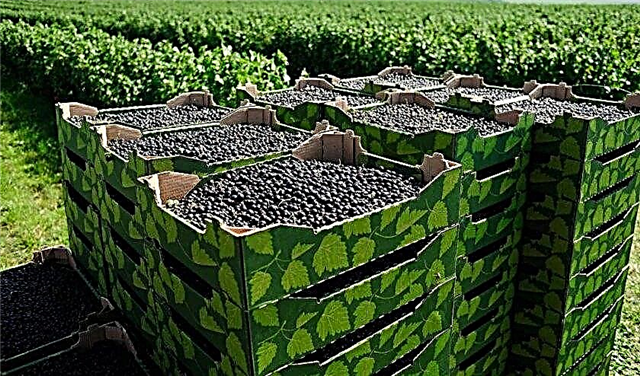
From this article, you learned how to take care of a plant to get a big crop. It is also important to note that all plants should be inspected before purchase - this will help to avoid diseases in shrubs.


